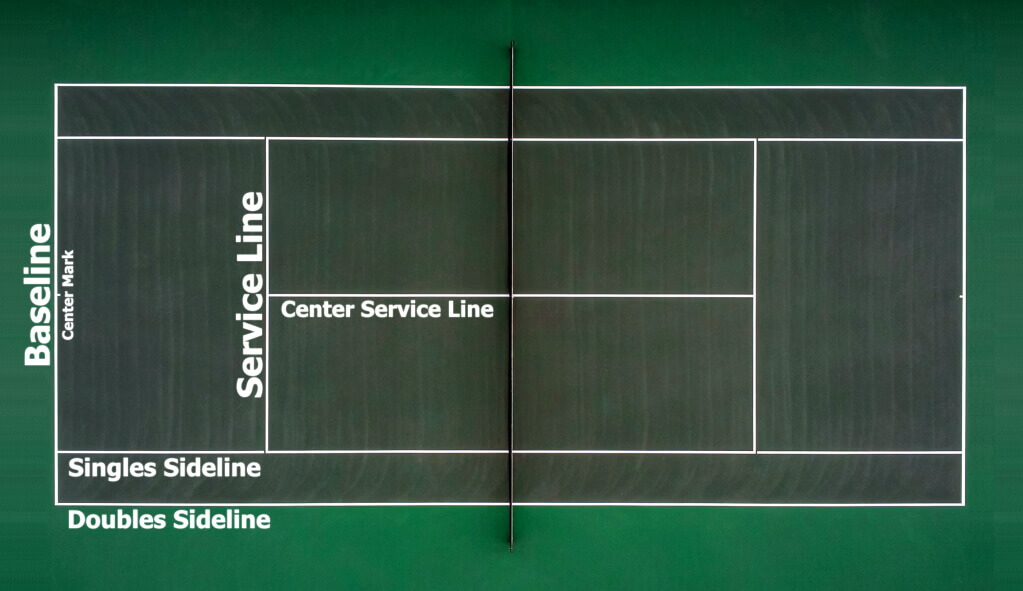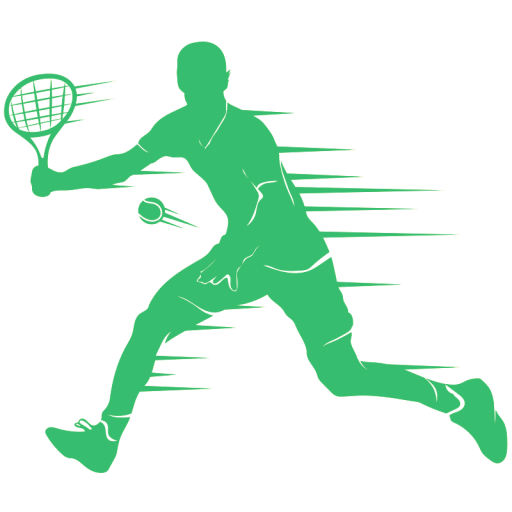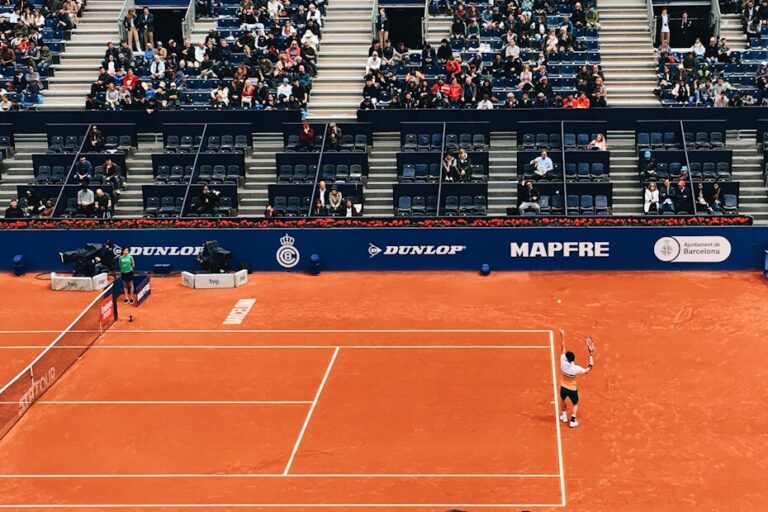Tennis has slowly become one of the most major sports played in the world. We see brilliant players each year that are transforming what it means to be a tennis prodigy.
For those who love to play this sport, it is vital to understand each aspect in-depth. If you are a beginner at tennis or want to understand the basic rules, you are in the right place. Here is everything you need to know about tennis rules.
A Brief History of Tennis
We always use the past to make sense of the present, which is why it is equally crucial to know the history behind any sport. The original name of tennis was lawn tennis. It consisted of two opposing players (singles) or two pairs of players (doubles) who use a racquet to hit a ball and bounce over a net on a rectangle court.
The sport is still known as lawn tennis in Britain because it was initially played on grass courts by the Victorian people. Of course, now people play tennis on various courts and not just grass. You can trace the origin of tennis back to a French handball game in the 12th century known as Jeu de Paume (game of the palm). However, the growth of tennis began in the 60s when major championships became open to amateurs and professionals.
After that, television broadcasts expanded the game even further in the 70s when they began playing tournaments. Of course, tennis fashion also boosted the rise of this game, and soon it became a worldwide phenomenon.
The Tennis Court: Layout and Boundaries

Before we get to the game’s basic rules, it is crucial to know the tennis court lines and layout. Knowing the layout will help you understand the difference between single and doubles games and the scoring rules. Here are some of the basics of the court that you must know:
1. The Baseline
It indicates the court’s boundary in terms of its length. The baseline has two primary functions:
- Standing behind the baseline is a requirement while serving.
- If any shot goes beyond the baseline, it will result in a point loss as the shot will be out.
2. Singles Sideline
The singles line indicates the boundaries in terms of width in a tennis match between two players. Any shot bouncing outside these singles lines will be considered out. Because of this, the player will lose a point.
3. Doubles Sideline
Of course, the doubles line is for doubles tennis matches. During the match, it will indicate the court’s boundary in terms of width. During single matches, the doubles line will be irrelevant.
4. Center Service Line
The center service line indicates the division of the court between the left and right half. The line is in alignment with the center mark. When it comes to the service line and center mark, it will only be relevant when a player is serving.
The player must serve diagonally on either side of this line, depending on their position. If the player ends up missing the shot, the serve will be a miss.
5. Service Line
The service line and the center service line combine to form what is called the service box. However, the service line marks the area’s limit lengthwise where the serve must go. Any serve that goes beyond the service line are considered to be a miss.
6. Center Mark
The center mark indicates where a tennis player should stand before they serve. The server will begin each game on the mark’s right. However, they will keep alternating between right and left after every point.
Basics of Scoring
Before we take a deep dive into the basics of scoring, here are some terms you must be familiar with:
- Points: Smallest measurement unit. Points increase from 0 (Love) to 15 to 30 to 40.
- Games: These consist of four points each. It will be won when a tennis player reaches four points with a two-point advantage.
- Deuce: The deuce takes place when the game score is 40 – 40. In such a case, the player or team must win two consecutive points in order to win the game.
- Sets: Consists of at least six games. It will be won by the team or player that wins six games first with at least a two-game lead.
- Advantage Set: If the set score of 6 – 6 is reached and players use advantage rules, the player or team can only win the set by getting a two-game lead over their opponents.
- Tiebreak set: If the set score of 6 – 6 is reached and tiebreak rules are used, the players will have to play a ‘tiebreak game’ to decide the winner of the set. During the tiebreak game, the player must reach seven points with a two-point advantage to win.
- Matches: Tennis matches take place in best of three or best of five sets.
These are the basic terms you must know to understand how the scoring system works in tennis. To sum it up, players must win four points to win a game, six games to win a set, and win two sets out of three (best of three) or three sets out of five (best of five) to win the match.
Playing a Tennis Match
Just like many other sports, a tennis match begins with a coin toss. The toss is done to determine which team or player will serve first. The player or team that calls the toss correctly will decide who will serve first, whereas the team or player that called incorrectly will decide which court side they would play on.
The serving player is known as the server, while the other player is known as the receiver. Once this is sorted out after the toss, the first point will begin. The server will go towards their side behind the baseline.
During the first point, the server will start serving from the center mark’s right. Then the server will start on the left side during the second point and keep alternating after every point. The server must hit the serve into the service box over the net and diagonally across the court.
That means that if the server is on the right side of the court, they should hit the serve in the left service box across the net. On each point, a player is allowed two serves. If a player misses their first serve, they have another chance to hit the service box on their second serve.
On the other hand, if the player misses both the serves, they have a ‘double fault’ and will lose the point. If the player hits the serve inside the service box, then the point will begin. After that, the goal of each player is to hit the ball over the net and on the court until one of the players wins the point.
Once the ball bounces on the service box for the first time after the serve, the players can let the ball bounce once on their court or directly hit it. When it comes to winning points, a tennis player can do that in the following ways:
- When the player hits an excellent shot that goes past the other player.
- When the player hits a shot that bounces two times on the other player’s court.
- When the other player hits the ball into the net.
- Double fault (when the other player misses two serves consecutively).
- When the other player hits a shot over the net, but it lands outside the court boundaries.
On the other hand, an important rule of tennis is “let.” When a let is called, the entire point is replayed. It can take place in two ways: the serve hits the net and bounces in the appropriate service box, and if any interference occurs during a point. Any player or the umpire can call a let.
Rules of Serving and Choosing Sides

Yes, some rules also dictate serving and switching sides. Here is everything you need to know about them:
1. Proper Serve
The player will begin serving on the right side of the court when the tennis match starts. The goal of this is to serve the ball into the diagonal service box. The correct landing will ensure the continuation of the game, and the server will switch to the left for the next point.
2. Foot Fault
The foot fault occurs when a player steps inside the tennis court or crosses the center mark before making contact with the ball. A foot fault is the same as a serving fault, so the player is given a second chance to serve.
3. First Serve
Each server is offered two attempts to land the tennis ball into the service box. The first attempt is called the first serve. If a player fails this first serve, it will lead to the second serve.
4. Second serve
The second attempt of serving is known as the second serve. When a player fails the second serve, they will lose the point.
5. Order of Service
The team or player winning the toss will decide who serves first. During matches, players or teams alternate between serving and receiving each game. Each player in doubles will get a chance to serve before repeating the cycle.
6. Switching Sides
Teams or players will switch sides for each odd-numbered game. For example, they will switch sides for games 3, 5, 7, 9, etc…
Singles and Doubles Tennis Rules
There are slight changes in tennis rules when it comes to singles and doubles games. These rules are regarding the court size and the serving order. Of course, the doubles rules are there to ensure the adaptation of the extra player on the court.
Singles Tennis Match
Here is a detailed explanation of what you must know about the singles tennis match:
1. The Match Format
You will notice that most singles matches are played in the best of three sets. However, some singles tournaments are played as best of five. Of course, the final decision depends on the tournament rules.
2. Serving Order
The player who wins the toss will choose who will serve first. The server will serve for the entire duration of the first game. After the first game, the next server will be the player who received last and will serve for the duration of the second game, and so on.
3. Court Size
The singles tennis court measures 78 feet long and 27 feet wide as it uses the innermost sideline.
4. The Tiebreak Serving Order
When the players reach a score of 6 – 6, a tiebreak game will be played to determine the player that will win the set. When it comes to a tiebreak game, the aim is to reach seven points first with a lead of two, which will result in winning the set. The player serving first will be the one who was due to serve the next game.
When it comes to a tiebreaker, the serving order will be:
- Player A for Point 1
- Player B for Points 2 and 3
- Player A for Point 4 and 5
- Player B for Points 6 and 7
- Player A for Point 8 and 9
- And so on
Doubles Tennis Match
Here is everything you must know about a doubles tennis match:
1. The Match Format
A doubles match usually happens in the best of five sets.
2. Serving Order
The team that wins the coin toss will determine which team will serve first and who will serve first from that team. The first server will serve for the entire duration of the first game. After the first game, the next server will be chosen from the opposing team and serve for the duration of the second game, and so on.
3. Court Size
A doubles court measures 78 feet in length and 36 feet in width as it utilizes the outermost sideline of the court.
4. Tiebreak Serving Order
- Player A for Point 1
- Player X for Point 2 and 3
- Player B for Points 4 and 5
- Player Y for Point 6 and 7
- Player A for Point 8 and 9
- And so on
Tennis Violations
Tennis also includes rules that ensure the integrity of the game. The top tennis institutions such as the International Tennis Federation, Association of Tennis Professionals, and the United States Tennis Association also have rules to ensure that players guarantee the integrity of the sport. If a player violates these rules, it can lead to point loss, fines, or even tournament suspension.
Here are some of the most common violations that one should never do during a tennis match:
- Equipment or Racquet Abuse: when players hit or throw the equipment or racquets aggressively.
- Abuse of Balls: when players intentionally and violently hit the ball outside the point.
- Verbal Abuse: when a player verbally abuses the umpire, staff member, spectator, or another player.
- Physical Abuse: when a tennis player shows physical aggression and abuse towards the umpire, staff member, spectator, or another player.
- Coaching: when the coach offers instructions to a player during a match in a professional tennis tournament.
- Visible Obscenity: when a player makes an offensive gesture that other people see.
- Audible Obscenity: when a player shouts audible offensive words.
- Intentionally Losing: when players don’t give their best efforts in any part of a match.
Of course, there are many other violations when it comes to tennis, but these are the most important ones. Players and any other person involved in the match need to be in accordance with the rules. The rules are there to ensure a good time for everyone and maintain the integrity of the game.
Other Tennis Rules You Must Know
Some tennis rules are there but are not known by many players. If you want to stand out from other tennis players, here are some rules you should know:
1. Racquet and Contact With Player’s Body
When a player hits a shot, the racquet must be in contact with their body. If the ball is out of reach and the player manages to throw his racquet, hit the ball, and get the ball on the opponent’s court, they will still lose the point. That is because the racquet was not in contact with their body.
2. Players Can’t Touch the Ball or Net
The player can only use the racquet to hit the ball towards the other side. If the ball comes in contact with any other body part, the player will lose the point.
Besides that, a player shouldn’t touch the net while a point is in play. If the player comes in contact with the net, be it purposefully or unintentionally, they will lose the point.
3. The No-Ad Rule
Some tennis matches will follow the No-Advantage scoring system. That means when the point score in a match is 40 – 40, the player winning the next point will win the game. Many tournaments design their matches according to the No Ad rule to make matches quicker.
4. Rules for Ball Around and Through the Net
Any tennis player can hit a shot around the net post as long as the ball lands on the opponent’s court. Such a shot is considered to be highly masterful and skilled. However, the players can’t hit a shot through the net.
5. No Noise During Play
Many people don’t notice this, but tennis players are not allowed to talk, shout, or make any unnecessary noises during games. Yes, players can grunt, but they can’t make any noise that will distract their opponent. If an umpire feels that this rule is violated, the player who made the noise will lose that point.
Final Words
That was your complete guide to understanding the basic rules of tennis. We have broken down each rule for you so you can simply understand the game and improve your tennis skills. Once you follow these guidelines, you will find it easier to play, and the sport will become much more fun.
If you understand all the rules we have told you above, then you understand tennis better than most of the population. That is because many people watch tennis but don’t understand the rules and history of the sport in-depth. We hope you are now clear of what happens during a tennis match.







